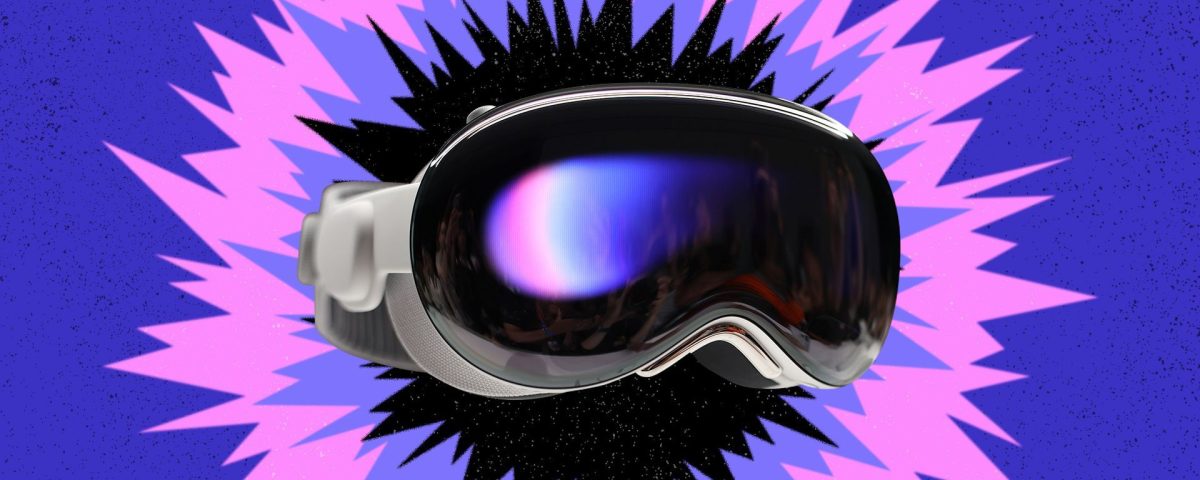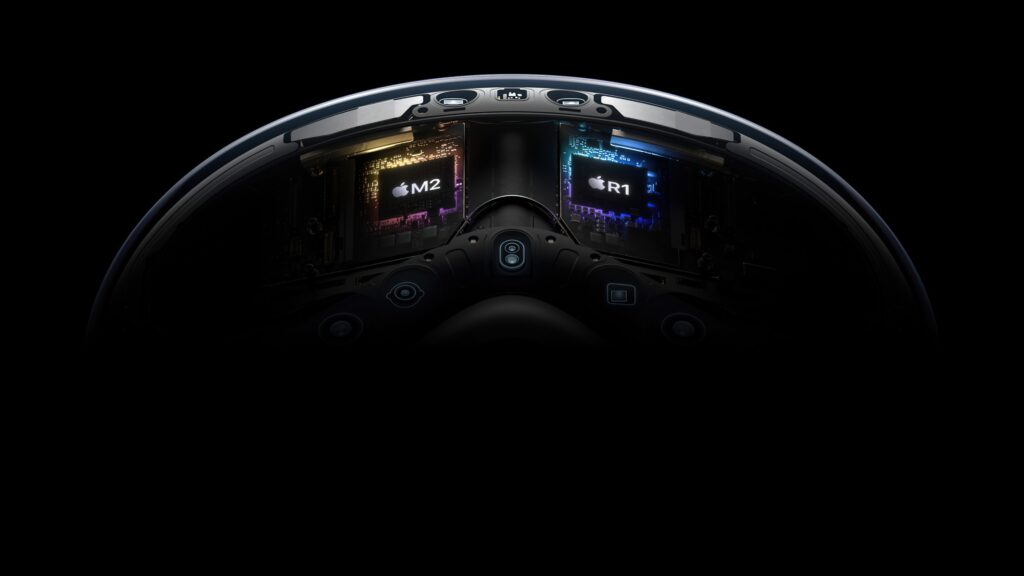Thoughts on apple's vision pro

Navigating the New Frontier
In this tremendous landscape of tech, the introduction of Apple’s Vision Pro marks a significant leap in technology in terms of Augmented Reality (AR), Virtual Reality (VR), and Mixed Reality. This blog will take you on a journey of its capabilities, exploring the wonders it brings and the challenges it faces. Also, it delves into the early impression, weighing its revolutionary aspects against its imperfections, and contemplates the broader implications of living in an increasingly digital world.
The Marvel of Visual Clarity and Spatial Computing

From the moment you wear on, the immediate standout feature is its unparallel visual clarity. The device is so crafted well in mixed reality experience that it blurs the lines between digital and physical. Virtual objects and screens are displayed with crisp, sharp detail, making it possible to interact with your digital workspace as if it were physically present in one’s room. I mean, immersion fosters creativity at this level and it offers a glimpse into the future that what this kind of emerging tech will look like or how one’s living space would seamlessly integrates with one’s digital life.
However, all this comes with its quirks. The pass-through view of one’s surrounding can appear blurry and slightly laggy. Defend it as, a remind of the technological balancing act between the digital and physical world. Despite this, the thrill and excitement of arranging virtual windows in one’s living space and moving around them is nothing short of magical, hinting at the potential of under discussed topic “spatial computing”.
A Mixed Bag of Execution
The Apple Vision Pro launch was not like the other typical Apple launch. User experience oscillates between highly refined elements and the rushed development of some parts. It seems like some parts was worked since 4 years and some had deadlines of 4 months. This inconsistency is the result of lack refinement and product pushed out in the market before achieving the seamless integration.
Encountering Jank
When commencing with initial setup and interaction with device, there are many janky moments. From cumbersome setup processes to unintuitive interactions and buggy app behavior, which results in detract from overall user experience expected from high standard achieved by Apple in previous products.
The promise and the Pitfalls of Spatial Computing

The core of the Vision Pro lies in its Spatial Computing OS, offering a glimpse of what the future holds. Yet, the ecosystem of apps that fully leverage this product or overall tech could be felt limited as per now. Also, under-promoted. While there are highlights, like user can project the laptop screen in living space, it may be said that some apps merely transplants existing experience into spatial and lacks significant value addition.
Moreover, extended use of the Vision pro could be felt cumbersome. Adjusting to the UI/UX paradigms, such as eye gaze for navigations, presents a learning curve but also underscores the innovative ways we might interact with tech moving forward.
Broader Implication for Society
With the advent of devices like this raises profound questions about the future of our digital lives. The very potential to create immersive, digital-first environments is exciting but also prompts reflection on the implication of humans spending more time in virtual spaces. And Meta, wants that virtual spaces be part of our daily lives. Now, it is very impressive and cool to interac as your personal avatar with other’s. However, as we navigate the blurred lines between the digital and physical realms, consideration around digital wellness for the Human Mind, the erosion of physical interactions or the core behavior of we as a social animal, and the potential for wearing this all the time just as we have phones in our hands.
The comparison to phone addiction is inevitable. Just as smartphones have reshaped our social interactions and attention spans, the immersive nature of mixed reality headsets could further amplify concerns. The Key Challenge will always be finding a balance that preserves our core values and connections to the physical world while embracing the opportunities of digital innovation.
Looking Forward to the Future
Despite the early flaws, the Apple Vision Pro offers a tantalizing preview of the future of spatial computing. It embodies the potential for a revolutionary shift in how we interact with technology, merging our digital and physical spaces in ways previously imagined only in science fiction(i.e., Snow Crash by Neal Stephenson and Ready Player One Film which was directed by Steven Spielberg). Yet, it also serves as a cautionary tale of the need for careful consideration and development to ensure that this future enhances, rather than detracts from, our one time-unique human experience.
As we stand on the cusp of this new digital gateway, it’s very clear that devices like this are only the beginning. The journey ahead will require a thoughtful approach to design, development, and the ethical implications of deeply integrated digital lives. The goal doesn’t have to be space reality but to enrich it, fostering a world where technology serves to enhance our human experience, creativity, and connections.
Final Thoughts
Yeah, we all have heard story of digitally uploading your brain or even yourself on a computer and as we progress, it is not that far down the road. This tech has a great potential for instance having a overall experience of being on Mars with seeing through the eyes of the robots there and controlling them. But, stepping a foot there and contributing your part to make city on Mars as the next frontier is another thing.
I am optimistic that Pearl would create a significant valuable contribution in Virtual Reality(VR), Augmented Reality(VR), and Mixed Reality.
– Yash Darji
Founder
February, 2024
